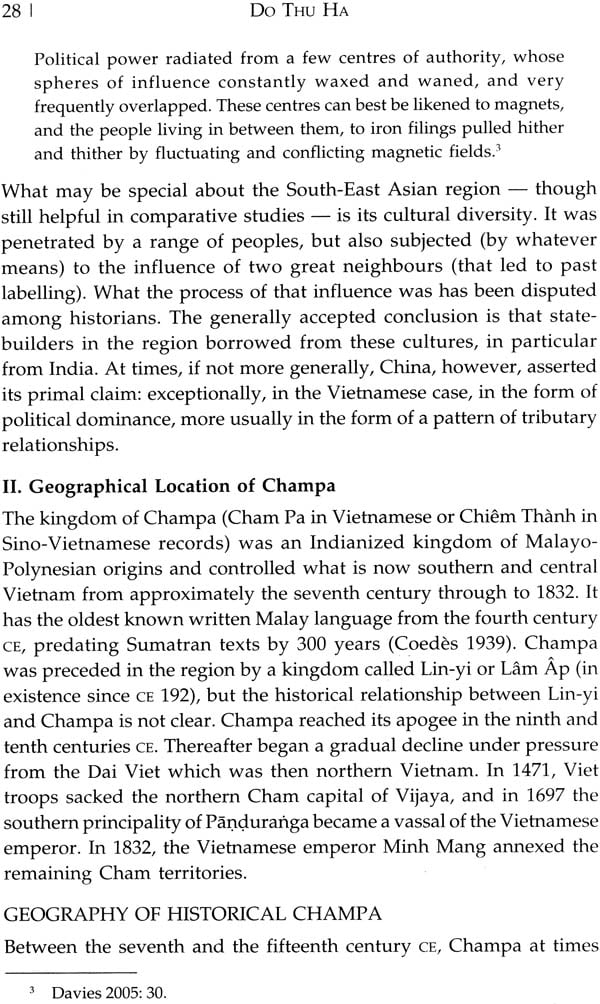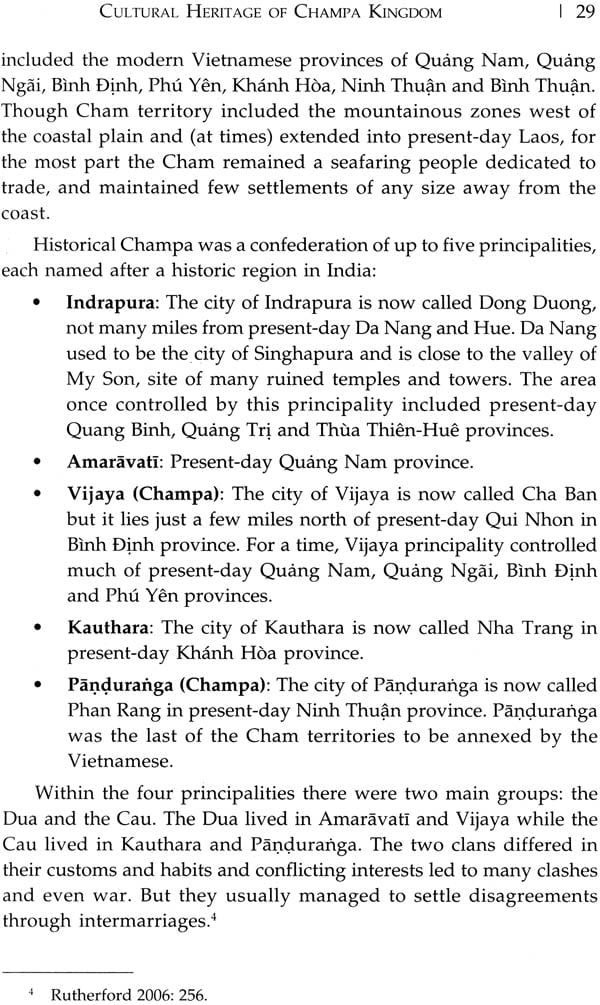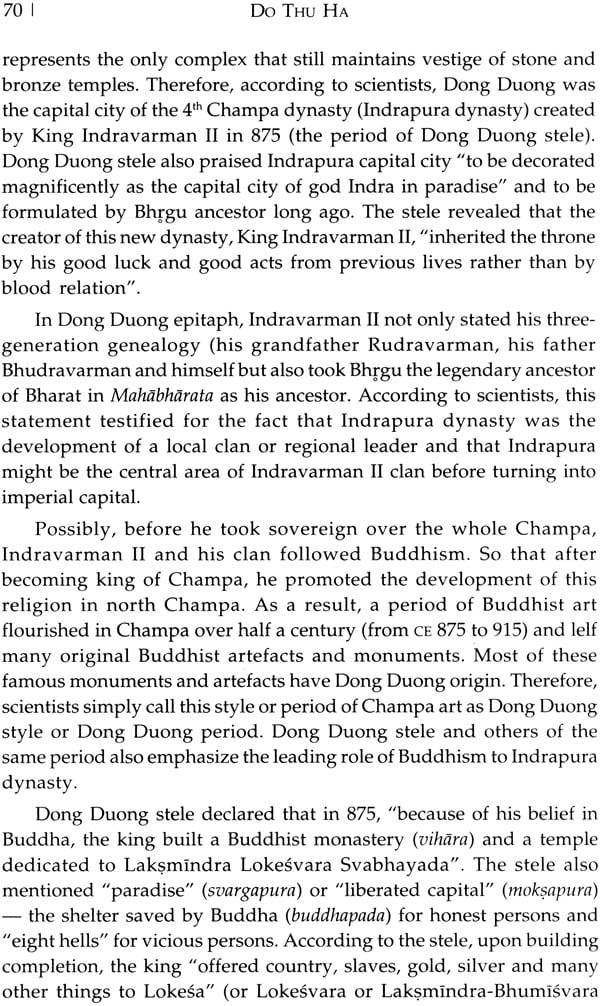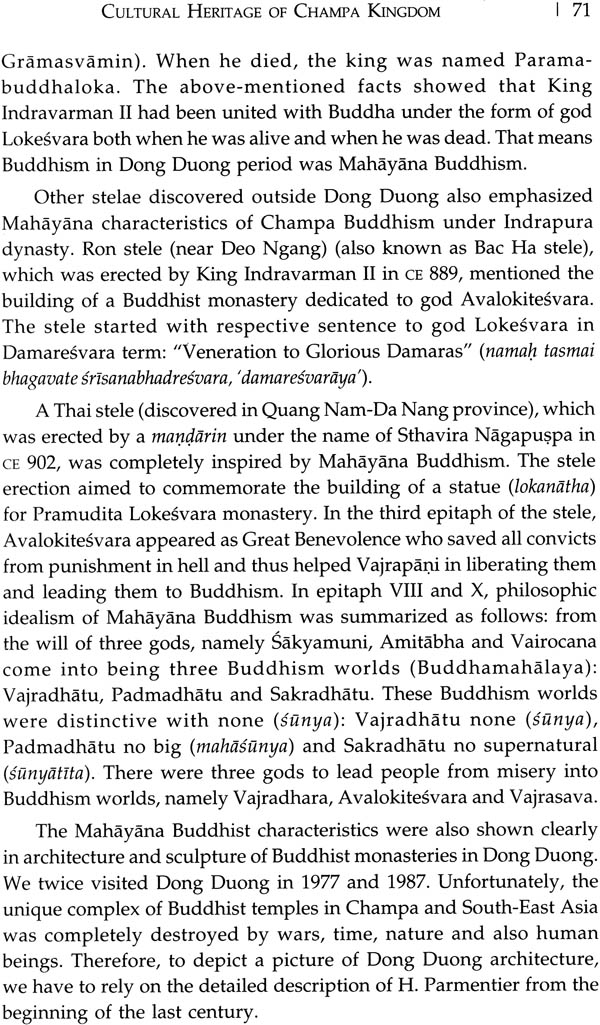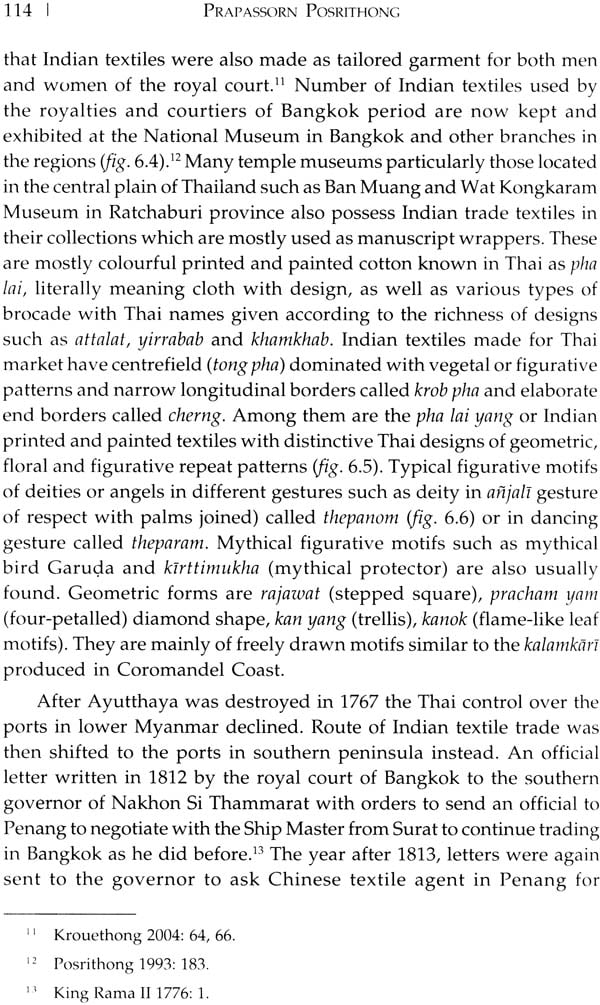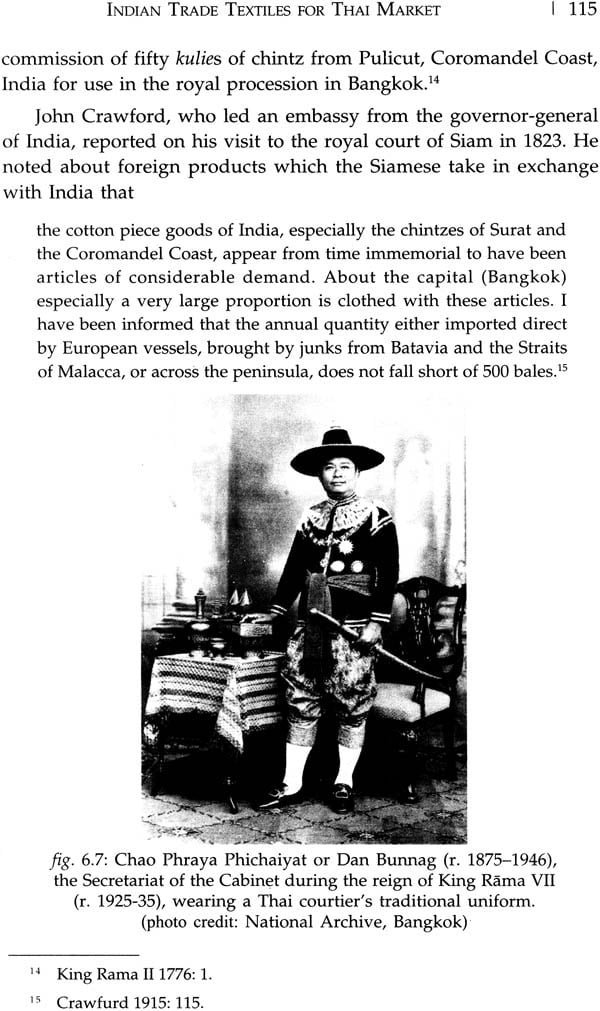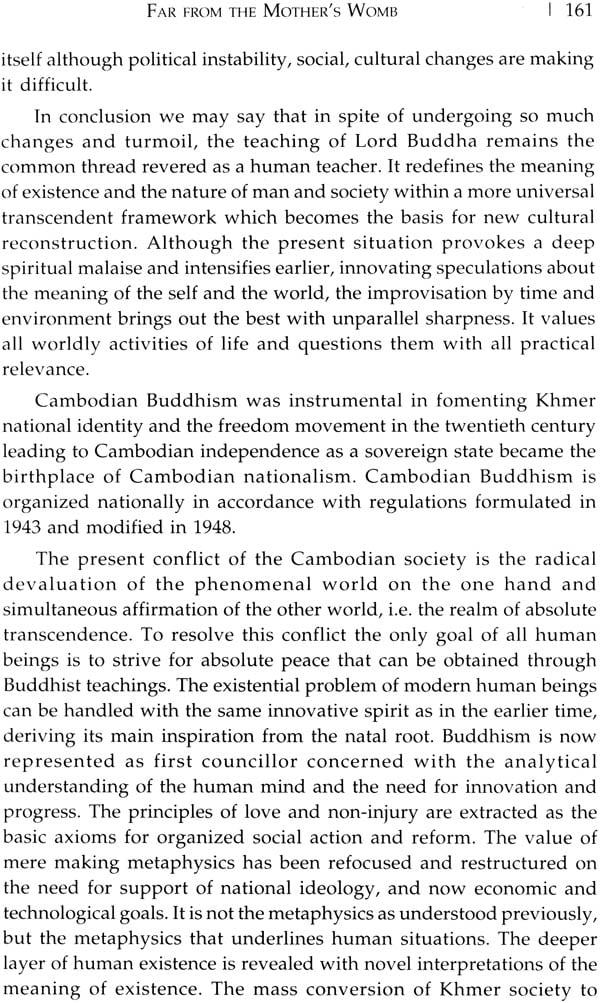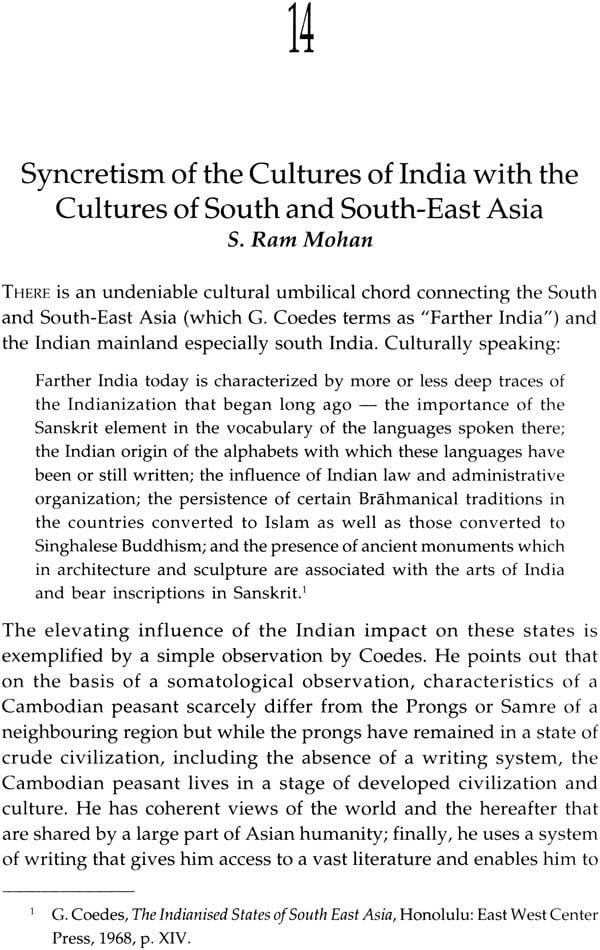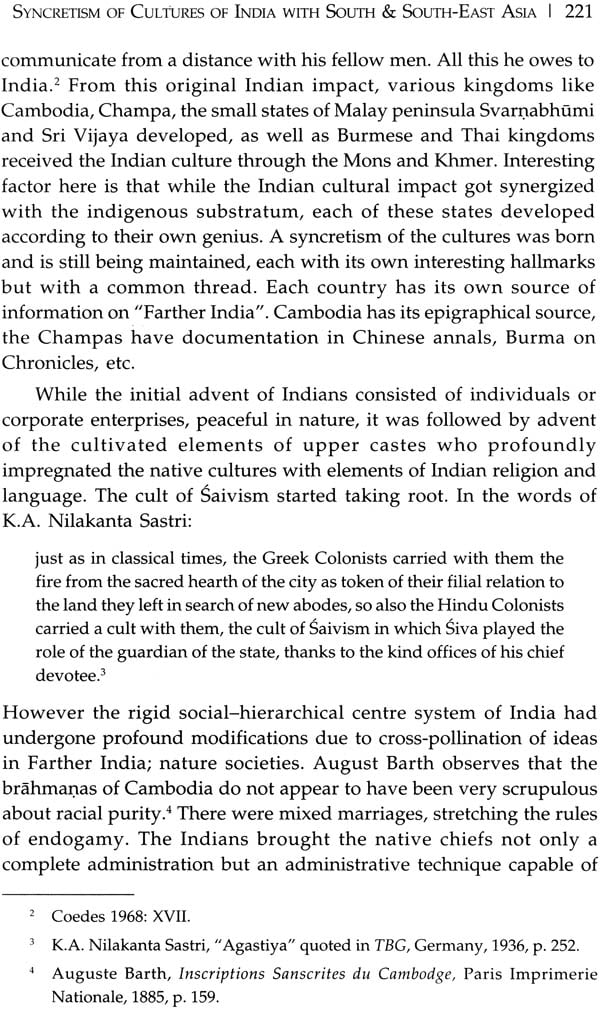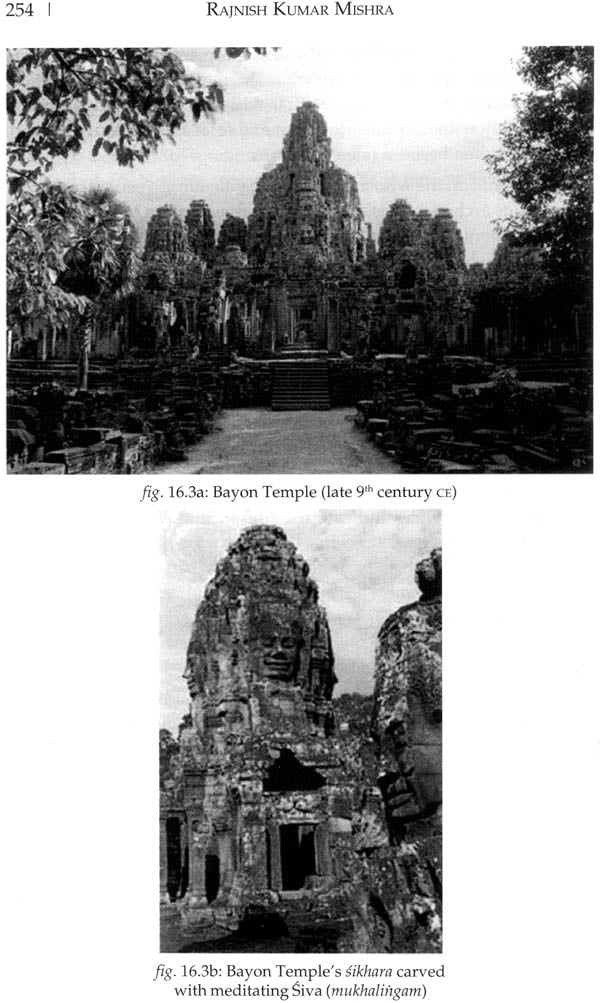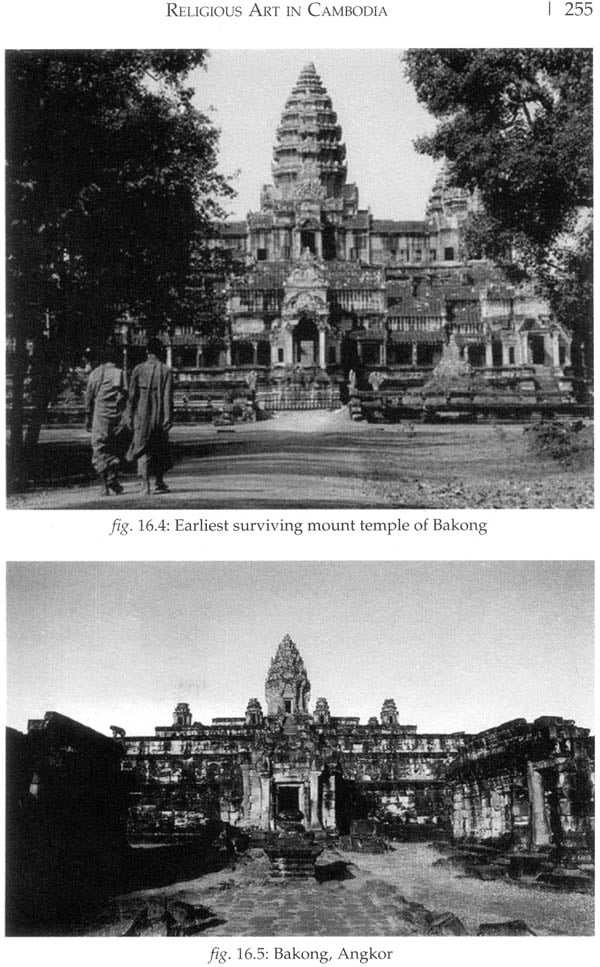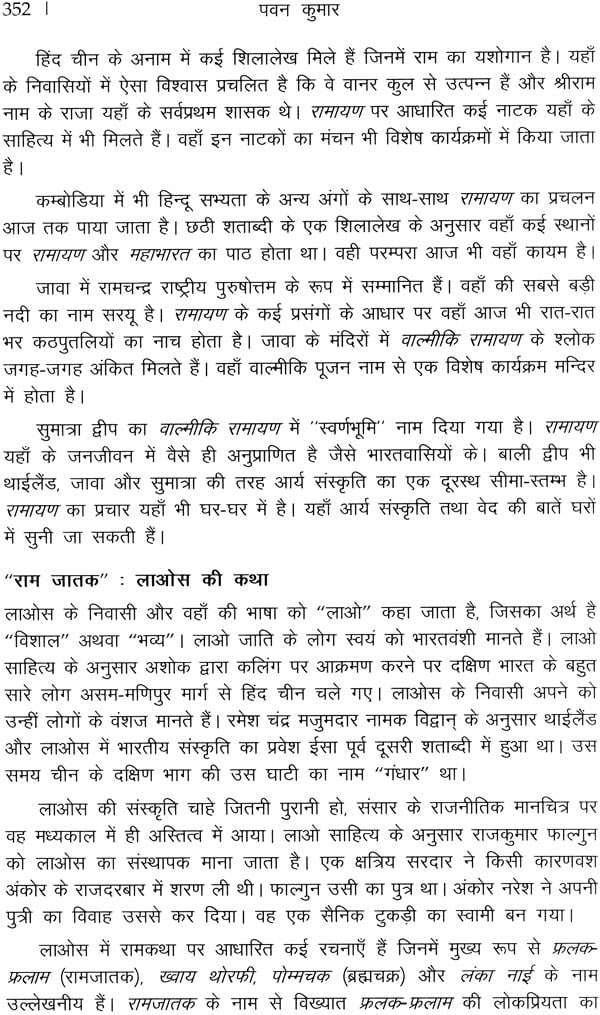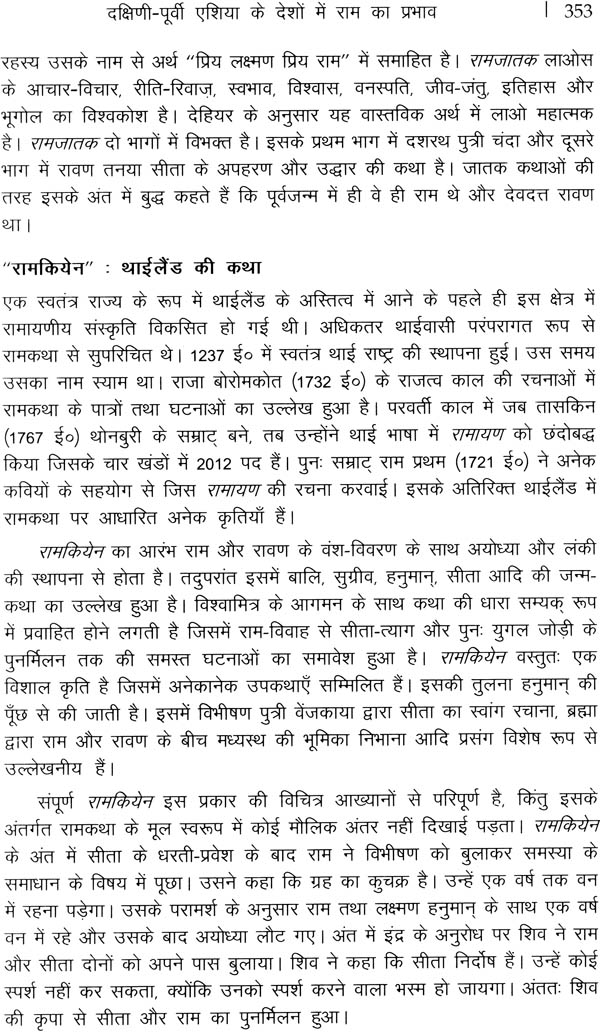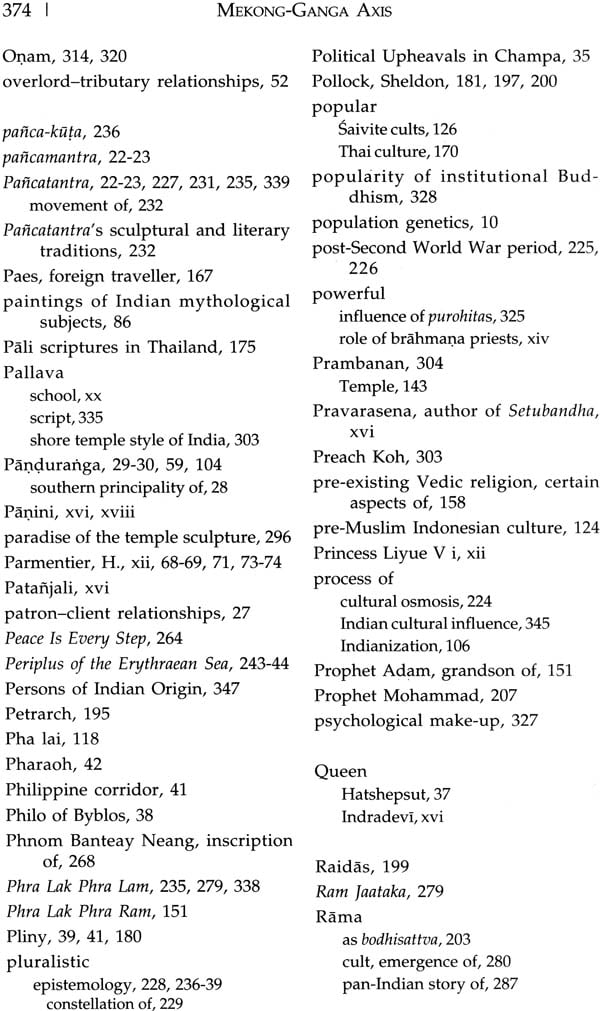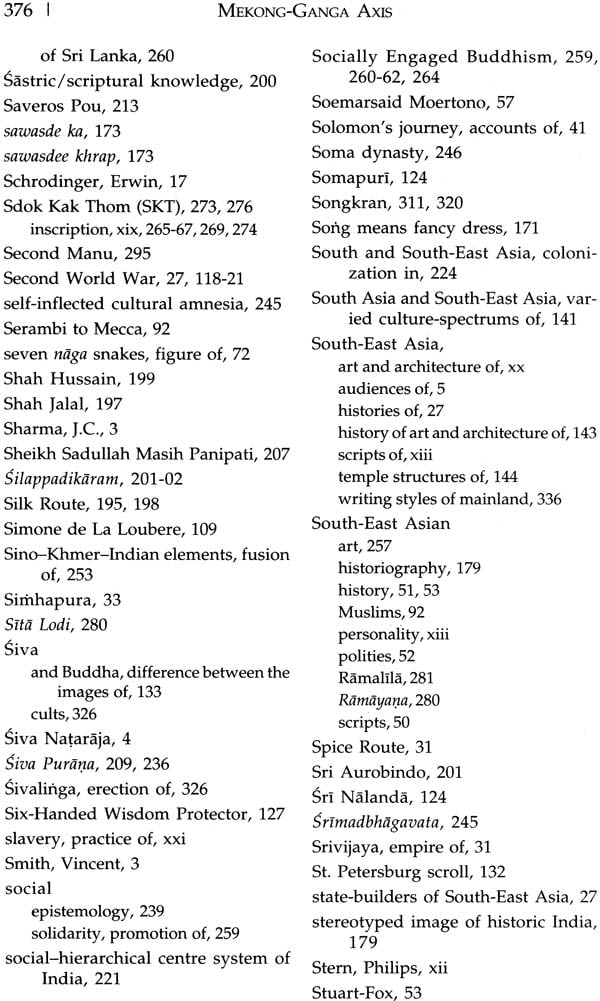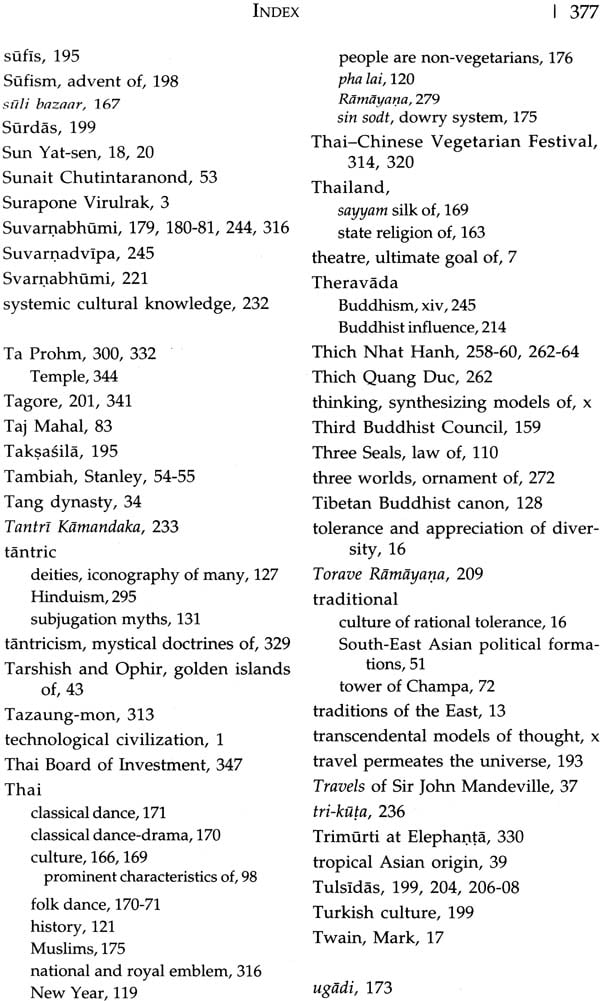
Mekong-Ganga Axis
Book Specification
| Item Code: | NAK738 |
| Author: | Pankaj Mittal, Ravi Bhushan and Daisy |
| Publisher: | D. K. Printworld Pvt. Ltd. |
| Language: | English and Hindi |
| Edition: | 2015 |
| ISBN: | 9788124608197 |
| Pages: | 408 (49 B/W Illustration) |
| Cover: | Hardcover |
| Other Details | 9.5 inch X 6.5 inch |
| Weight | 880 gm |
Book Description
India has a fascinating history of cultural relationship with South-East Asia, spanning across more than the last two millennia, mainly with the spread of Buddhism and Hinduism, deeply impacting the cultural, religious and social lives of people in countries such as Cambodia, Indonesia, Laos, South Korea, Sri Lanka, Thailand and Vietnam. The Hindu- Buddhist monuments in South-East Asia stand testimony of this peaceful and mutually beneficial interaction. The contents of this book - Mekong-Ganga Axis - centre around India's association with most of the countries of the region, especially those on either side of the Mekong River.
Most of the South-East Asian countries were influenced by more than two foreign cultures, though they have an indigenous culture. The Chinese and Indian cultures had impacted them the most, in addition to the European influence. However, only India's impact was peaceful and, to a great extent, non-political. This paved the way for many developments in architecture, religious engagements, inter-culturality, syncretism of cultures, inter- literariness, composite literary cultures, religious arts, trade relations and so on.
This book thus critically engages one to all these topics and more, and recalls India's glorious relationship of the forgone era with these countries, showcasing somewhat a similar kind of cultural/religious affinity from South China to India. And two great rivers, Mekong and Ganga, are witness to it. It also reinstates the criticality of India to be engaged with these countries at present because of the compulsions of a globalized world.
Dr (Mrs) Pankaj Mittal, M.5c., Ph.D., is Joint Secretary in University Grant Commission of India and formerly Vice-Chancellor, BPS Mahila Vishwavidyalaya, Haryana. Having a wide- ranging experience of over two decades, Dr Mittal is a well-known persona in the realm of Higher Education. An awardee of Fulbright Nehru Seminar Grant for educational administrators, Dr Mittal is a member in many high-powered educational committees and professional bodies. She has presented numerous papers and published a number of articles on higher education and women empowerment in journals of international repute.
Dr Ravi Bhushan, MA, Ph.D., teaches English at Bhagat Phool Singh Mahila Vishwavidyalaya, Khanpur Kalan, Sonepat, Haryana. He has presented thirty-five papers in national and international conferences and written four books, including a reference book on William Golding. He is one of the editors of the book titled Affinities India Korea: Past and Present. Dr Bhushan is on the editorial board of International Journal of English Linguistics, Canada. His areas of interest are ELT, Communication Skills and Orality.
Dr Daisy, MA, M.Phil. (ELT), Ph.D. in English, is Associate Professor at BPSM Girls' College under BPS Mahila Vishwavidyalaya, Sonepat, Haryana. She is a bilingual poetess and writer (in English and Hindi). Dr Daisy has published her poems and stories in various anthologies and journals, and has published her own anthology of Hindi poems Aas. She has presented papers in many national and international forums and published twenty-four articles. She also has six books to her credit including a reference book on Ruth Prawer Jhabvala. She is on the editorial board of the peer- reviewed international research periodical Journal of ELT & Poetry.
I am glad to know that the Centre for Indic-Asian Studies (CIAS) is publishing its second book titled Mekong-Ganga Axis. Indeed it is a privilege for me to share my thoughts with the readers through this foreword.
The CIAS, established as one of the youngest Area Study Centre of the University Grants Commission of India at Bhagat Phool Singh Mahila Vishwavidyalaya in 2011, is making significant contribution to the research on Indo-Asian issues of Culture, Literature, Economy, Society, Politics, History, Science, Art and Heritage. The two international conferences organized by CIAS on "India-Korea Relations: Past and Present" and "South-East-East Asia and India:
Historical Interconnections in Art, Architecture and Culture of Laos, Thailand, Cambodia and Vietnam" have truly been academic events of international standard. The participating scholars in these conferences, I am told, discussed various issues pertaining to South Korea, Vietnam, Cambodia, Laos, Thailand, Sri Lanka and their historical-cultural relationships with and among each other and the discussions will go a long way in further developing the cultural, social, political and diplomatic relationship between these two societies. I believe these scholarly deliberations would facilitate formulation of India's foreign policy towords the countries of this region.
This book which is appropriately titled Mekong-Ganga Axis carries the scholarly papers presented during the conference. While going through the papers and discourses of eminent and erudite scholars from the world over, I could sense the eclectic nature of the themes discussed during the conference. The horizon of topics discussed ranges from theatre to commerce and has in its ambit areas as varied as History, Science, Literature, Language, Anthropology, Culture, Economics and Geography by renowned scholars from different countries. The discourses, I am sure, are definitely an invaluable contribution to the existing knowledge on South-East Asia.
I take this opportunity to applaud and appreciate the untiring efforts put in by CIAS and in particular its erstwhile Director and internationally acclaimed scholar of Indian knowledge systems, Prof. Kapil Kapoor, in bringing together the scholars from world over and making the conference happen. I also put on record the key role played by Dr Daisy, Dr Ravi Bhushan and Dr Babita in the planning and organization of the conference and putting together the manuscript for publication.
A Preface is an exercise in the poetics of recall, of memory, a time to bring to mind all those who made this book possible.
Dreams they say happen only in sleep. But sometime they climb down to earth and bless some beings. I have been fortunate that I have actually lived a dream in the siddha village of Khanpur Kalan, a dream that lasted more than four years. Goodness was the stuff of that dream - the dream is over but the goodness of Khanpur still lives in my heart and mind, the goodness of beautiful, loving benign human beings. Goodness of those with whom I worked those four years - Dr. Ravi Bhushan, Coordinator of the Centre for Indic-Asian Studies, always a younger brother to me for all my small and big problems, Dr. Daisy of the University's Woman College, like a daughter to Mrs. Kapoor and me with her warm love and care in summer and winter, Joginder-ji with his smiling face and the ladaoos he brought in the marriage season from his village for Mrs. Kapoor who is so fond of those village Iaddoos, the late Sunita who always knew when I needed warm water and what kind of tea will do me good. And our Ms. Meena, always Minu for me and Mrs. Kapoor, our daughter, who was always so concerned about both of us as only a daughter can be, about our food, our health and our general well- being.
And there was ever smiling Rinu, our Ph.D. student, who would feed the best burfi to us all and who was attending to the participating scholars all the time taking care of their small problems with an endearing smile. May Bhole Baba bless her!
We can never dream of repaying their goodness.
It was this beautiful family that in a new, nascent rural girls' university enacted, what would appear almost impossible for a rural university off the main road, two international conferences in the pioneering area study Centre of Indic-Asian Studies in 2012 and 2013, conferences that brought together an array of scholars from Bharat and abroad. The first was about the rich historical India-Korea relations and the Centre has already published the proceedings of that conference. The second conference was an exploration in India's more than a millennia old relationship with the South-East-East Asian region, the land along the two banks of the River Mekong, the river that echoes the name of Ganga and not unexpectedly the culture of the four countries Cambodia, Laos, Thailand and Vietnam - on the banks of Mekong - have native cultures markedly inflected by Indian culture over centuries. This area earlier subsumed under Brhat Bharat (Greater India) has now assumed considerable geo-political importance and much significance for India and therefore this conference was an effort to reignite that age-long relationship. The cooperation received from the embassies of these countries was most encouraging, and more encouraging was the enthusiasm with which so many scholars from these four countries responded to the Centre's request and participated in the deliberations. Their presence along with noted Indian scholars made it a truly educative experience for all. The range, the diversity of topics discussed, gives an idea of the multi-dimensional, interactive relationship that characterizes this region, a relationship that still exists.
In the now changed geo-political situation, this volume we expect shall contribute to a better appreciation and closer relationship between Bharat and Mekong countries in the time to come.
The students loved the experience of listening to so many scholars and they were great hosts to all the scholars, serving them and attending to their comforts and needs.
This volume shall be an enduring testimony to the love and care that mark all aspects of life in that noble village - Khanpur Kalan. I am sure Bhagat Phool Singh-ji, the great social revolutionary who founded the seed institution of this university, the girls' school in 1936, is happy in his eternal abode with this small token exercise in ideas in the village he loved and by and for the girls whom he loved even more.
| Foreword | v | |
| Preface | vii | |
| Conference Rationale | ix | |
| Keynote Address | xi | |
| Inaugural Address | xxiii | |
| Acknowledgement | xxix | |
| 1 | The Role of Classical Indian Theatre in Spreading the Cultural Influence of India to South-East Asia | 1 |
| 2 | Concepts for the Revival of Traditional Links between India and South-East-East Asia for Global Leadership | 9 |
| 3 | Cultural Heritage of Champa Kingdom in Central Vietnam: Some Evidences of the Interaction of the Trade and the Religion between India and Vietnam in the past | 24 |
| 4 | Colonial, Modern, or Traditional? How to Read the Indo-Saracenic Architecture of South and South-east Asia | 81 |
| 5 | Cultural Relationship between India and south-East Asia | 96 |
| 6 | Indian Trade Textiles for Thai Market | 107 |
| 7 | Hindu-Buddhist Syncertism in the Trans-Himalaya and South East Asia: An Attempt at a Comparative Study of Religious Literature of Tibet and Bali | 123 |
| 8 | Beyond the Horizon of Culture-Spectrum | 141 |
| 9 | Far from the Mother's Womb | 155 |
| 10 | Thailand and Karnataka | 163 |
| 11 | Global Ancient India and Suvarnabhumi (South-East Asia): A Historical Perspective | 179 |
| 12 | The Interconnection between India and South-East Asia Especially Indonesia in Art, Culture and Architecture | 182 |
| 13 | "Interculturality" in South Asia: With Special Reference to Dissemination of Ramakatha | 191 |
| 14 | Syncretism of the Cultures of India with the Cultures of South and South-East Asia | 220 |
| 15 | Understanding South Asia-South-East Asia Cultural Contacts: An Alternative Perspective | 225 |
| 16 | Religious Art in Combodia: Saivism, Vaisnavism and Buddhism | 242 |
| 17 | Buddhist Engagement in South-East Asia: A Case Study of Vietnam | 258 |
| 18 | Saivism in Ancient Cambodia as Revealed from Sdok Kak Thom Inscription | 265 |
| 19 | Ramman Pattar Performance in the Central Himalaya and Its Parallels in the Balanese and Javanese Theatre | 277 |
| 20 | Reflection of Indian Culture in the Kambuja Empire of South-East Asia | 293 |
| 21 | Culture Relationship between India and Thailand | 308 |
| 22 | Reinventing the Connectedness: Implications for India in Mainland South-East Asia | 322 |
| 23 | दक्षिणी - पूर्वी एशिया के देशोंमें राम का प्रभाव | 350 |
| 24 | भारतीय संस्कृति तथा रामायण का थाईलैंड पर प्रभाव | 355 |
| Contributors | 358 | |
| Index | 361 |
